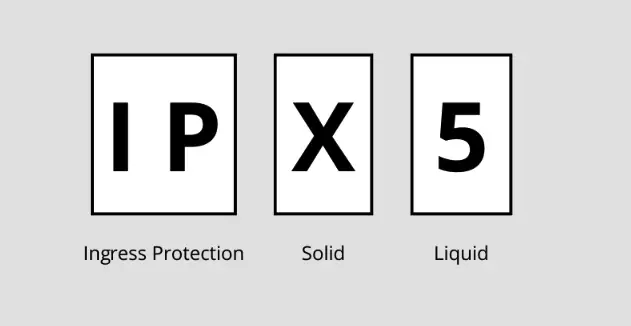Electronic devices have become an integral part of our everyday life. Practically anything we do today, whether it is related to work or our free time, is closely connected to electronic devices. To be honest, they are a great help in most cases, and because of that, we tend to pay attention to where we can use them and worry if there are any chances for them to get damaged.

According to that, most electronic device manufacturers pay special attention to the protection of these devices from liquids, dust, sudden falls and so on. Since water is the greatest threat to our electronic devices, manufacturers have set some testing standards that can tell the average user the level of protection their devices have. As a result, more and more consumers pay attention to the so-called IP rating.
Let’s take a closer look at what IP rating is.
What is IP Rating and Testing?
IP stands for Ingress Protection and knowing its meaning is pretty important nowadays. It basically is used as a metric that tells us how much a specific device is protected from the intrusion of solid elements and liquids. The devices are protected with casings or enclosures and the IP rating shows us the level of protection.
The main idea behind this testing is to show whether liquids and solid materials can enter the casing and damage the device. To make things clearer let’s take a look at the following rating – IP67 or IPX5.
We have already said that IP stands for Ingress Protection. What we really need to know is the meaning of the numbers after it. The first number represents the protection from dust and solid materials and ranges from 0 to 6. In this case, 6 is the highest and best protection. The second number represents the protection from liquids. It ranges from 0 to 9 and in this case also, higher is better.
But now you may ask what does the X mean in IPX5 or IPX7? Well, the X is usually added when the device hasn’t been tested for protection from solid materials if it replaces the first number, or from liquids if it replaces the second number. In this case, the number 7 means that the device can survive being immersed in 1-meter-deep water for half an hour.
OK, now let’s see what IP67 means. We have explained the second digit 7 in the example above. The first digit 6 means that the device is protected from dust which is pretty important if you are into any activities where you get in touch with dust, like mountain biking, hiking, and so on. And dust, just like water, can easily enter the device casing and damage it.
IP Rating Tests Explained
As we have already said when it comes to the testing numbers, the higher the number the better the protection. However, you need to be aware that all the tests are being conducted in strictly controlled conditions that are not the same as some situations in normal life. So, if your smartphone carries the number 7 on the liquid protection scale, it definitely doesn’t mean that you should swim with it or use it for underwater photography. It generally means that your device will be protected if you accidentally drop it in water or when someone pushes you into the swimming pool while you are having your smartphone in your pocket.
Important Notes
- Just like everything else in this world, there are fake ratings as well. Based on that there is a difference between IPX6 and IPX-6. Did you notice the difference between these two? Yes, it’s the hyphen and you should pay special attention to it. If the device you are planning to buy is labeled with a hyphen in the IP rating it would be better to stay away from it. You definitely don’t want to spend your hard-earned money on a device that doesn’t have any protection from liquids and solid materials.
- If you have purchased a device with an IPX7 or IPX8 rating, it doesn’t mean that it has IPX6 and IPX5 ratings and so on. To carry these ratings the device will have to be tested further. Therefore, don’t be surprised if you see that a device has two ratings, it simply means that it has been tested for both of them.
- To be safe it is highly recommended to purchase devices from trusted and well-known brands. Manufacturers today, and especially big brands like Bose, Pioneer, Sennheiser and so on, pay special attention to the protection of their devices. Therefore, by investing in a device that comes from a reputable company guarantees that the product has been thoroughly tested and that it really deserves the IP rating it carries.
FAQs
Are IP ratings internationally recognized?
Yes, IP ratings are internationally recognized and governed by the International Electrotechnical Commission (IEC) standard 60529. This ensures consistency in the interpretation and application of IP ratings worldwide.
Are higher IP ratings always better?
The required IP rating depends on the specific application and environmental conditions. Higher IP ratings mean better protection, but they may not be necessary for every situation. It’s essential to assess the device’s usage environment and select an appropriate IP rating accordingly.
Can an IP rating be upgraded or modified after production?
No, once a device or enclosure is manufactured and assigned an IP rating, it cannot be upgraded or modified.
Are IP ratings applicable to electronic devices only?
No, IP ratings can be assigned to various products, including electronic devices, enclosures, lighting fixtures, outdoor equipment, and even vehicles. Any product that requires protection against solid objects and liquids can be assigned an IP rating.







Add Comment